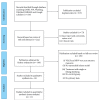Salvianolic Acid Exerts Cardioprotection through Promoting Angiogenesis in Animal Models of Acute Myocardial Infarction: Preclinical Evidence
- PMID: 28713492
- PMCID: PMC5497657
- DOI: 10.1155/2017/8192383
Salvianolic Acid Exerts Cardioprotection through Promoting Angiogenesis in Animal Models of Acute Myocardial Infarction: Preclinical Evidence
Abstract
Radix Salviae miltiorrhizae, danshen root (danshen), is one of the widely used Chinese herbal medicines in clinics, containing rich phenolic compounds. Salvianolic acid is the main active compound responsible for the pharmacologic effects of danshen. Here, we aimed to evaluate the effects of salvianolic acid on cardioprotection through promoting angiogenesis in experimental myocardial infarction. Studies of salvianolic acid in animal models of myocardial infarction were obtained from 6 databases until April 2016. The outcome measures were vascular endothelium growth factor (VEGF), blood vessel density (BVD), and myocardial infarct size. All the data were analyzed using Rev-Man 5.3 software. Ultimately, 14 studies were identified involving 226 animals. The quality score of studies ranged from 3 to 6. The meta-analysis of six studies showed significant effects of salvianolic acid on increasing VEGF expression compared with the control group (P < 0.01). The meta-analysis of the two salvianolic acid A studies and three salvianolic acid B studies showed significantly improving BVD compared with the control group (P < 0.01). The meta-analysis of five studies showed significant effects of salvianolic acid for decreasing myocardial infarct size compared with the control group (P < 0.01). In conclusion, these findings demonstrated that salvianolic acid can exert cardioprotection through promoting angiogenesis in animal models of myocardial infarction.
Figures









References
-
- Organization WH. World Health Organization report. May 2014, http://www.who.int/mediacentre/factsheets/fs310/zh/
-
- Hung J., Teng T. H., Finn J., et al. Trends from 1996 to 2007 in incidence and mortality outcomes of heart failure after acute myocardial infarction: a population-based study of 20,812 patients with first acute myocardial infarction in Western Australia. Journal of the American Heart Association. 2013;2(5, article e000172) doi: 10.1161/JAHA.113.000172. - DOI - PMC - PubMed
Publication types
MeSH terms
Substances
LinkOut - more resources
Full Text Sources
Other Literature Sources
Miscellaneous

